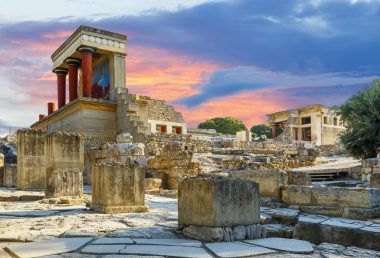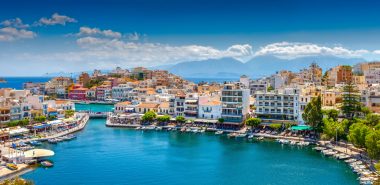Surrounded by more than 1,000 kilometers of coastline, Crete offers stunning beaches surrounded by mountains that rise over 2,400 meters high. Crete is unlike any other island in Greece. It is the largest of all the Greek islands and even one of the largest islands in the entire Mediterranean. The main attractions in Crete are the incredibly beautiful beaches and the turquoise shimmering waters of the sea. However, the island is also home to important archaeological sites, imposing gorges, historic Venetian-style towns and fortified fortifications, as well as small coastal towns where you can escape to enjoy Greek cosiness. We present some highlights of this enchanting holiday region.
The beaches of Crete

Most visitors who come to Crete between spring and autumn are here to soak up the sun and bathe on the island’s beautiful beaches. Not all beaches here are created equal. Some of the beaches of Crete are pebble beaches, others are among the most beautiful, soft sandy beaches in the world. The crystal clear water glows turquoise under the Mediterranean sun.
The most famous beaches are Elafonissi, famous for its white and pink sand, and Balos or the Balos Lagoon, as it is also often called. Both are located in the immediate vicinity of Chania. And while these are must-see places, they are really just the tip of the iceberg when it comes to the outstanding beaches in Crete. To experience dramatic scenery, head to the remote south coast.
Here you’ll find Matala, a pretty little town with a fantastic stretch of beach lined with caves at one end. Preveli beach, which sits at the end of a gorge and is surrounded by huge cliffs yet accessible via a short hike, is another major attraction on this side of the island. On the north coast, you can also take a detour to the beaches around Agios Nikolaos in the picturesque Mirabello Bay. A magical place is also the beach of Voulisma. However, if you have enough time to explore a little further afield, Vai Beach, also known as Palm Beach, is one of the best beaches in Crete.
Palace of Knossos

Knossos is the most important archaeological site in Crete. The Minoans, an ancient Greek culture dating back to the Bronze Age and the first known seafaring power in the entire Mediterranean, got their name from the famous King Minos. Knossos near the city of Heraklion is said to have been the seat of power of King Minos. The Minoan palace is a monumental residential complex centered around a huge courtyard where bull fights were apparently staged, a “sport” in which the fighters ran up to a bull, grabbed him by the horns and tried to knock him over. Knossos was abandoned around 1450 BC. It is still unclear why – a severe earthquake is suspected after a volcanic eruption on Santorini. There is also a theory that Crete may have been devastated by invaders. For whatever reason, the Minoan people disappeared completely.
Agios Nikolaos

Agios Nikolaos is a charming little town on the northeast coast, about 65 kilometers away from Heraklion. Although it is a tourist city, it feels much less touristy than places like Chania. Highlights of a visit include a walk along Lake Voulismeni, as well as a tour of the nearby harbor area overlooking the sea. A walk from the port to Kitroplatia beach will take you past two famous statues and offer stunning views across Mirabello Bay to the high mountains of eastern Crete. Near Agios Nikolaos, you can also visit the Diktean Cave with its stalactites and stalagmites, or venture into the mountains to the mountain village of Kritsa, where local artisans offer traditional handicrafts such as knitted leather, porcelain and traditionally handmade carpets. On your way to Kritsa, make a detour to the small chapel of Panagia Kera from the 13th century.
The Samaria Gorge

Crete is famous for its imposing canyon landscape, but the Samaria Gorge is the most impressive of all. It is located in the Samaria National Park and is a UNESCO Biosphere Reserve. Tourists from all over the world come here to take part in a hike of about 16 kilometers that goes through the Samaria Gorge. From the village of Xylóskalo, not far from the village of Omalos, the gorge descends 1,250 meters and leads to the sea, near the village of Agia Roumeli on the southern coast of Crete.
The Tarraios, a river that has no water in summer but is flooded in winter, runs parallel to the gorge, bordered by huge cliffs on its banks. The gorge is open to tourists from the months of May to the middle of October. Although the hike is mostly downhill and most of the altitude descent occurs in the first few kilometers, the path over scree is not easy to manage and is not suitable for people with walking problems. It is a nice challenge for experienced tractors who do not mind an extended day hike.
The tour lasts about five hours, depending on your personal fitness. However, with transportation included, allow at least a 12-hour day from the time you leave your hotel in Chania to the time you return. Most tourists make the trek as part of an organized day trip from Chania, where all transportation is taken care of. You can also take the hike to the Samaria Gorge from Heraklion, but this is a very long day trip.




